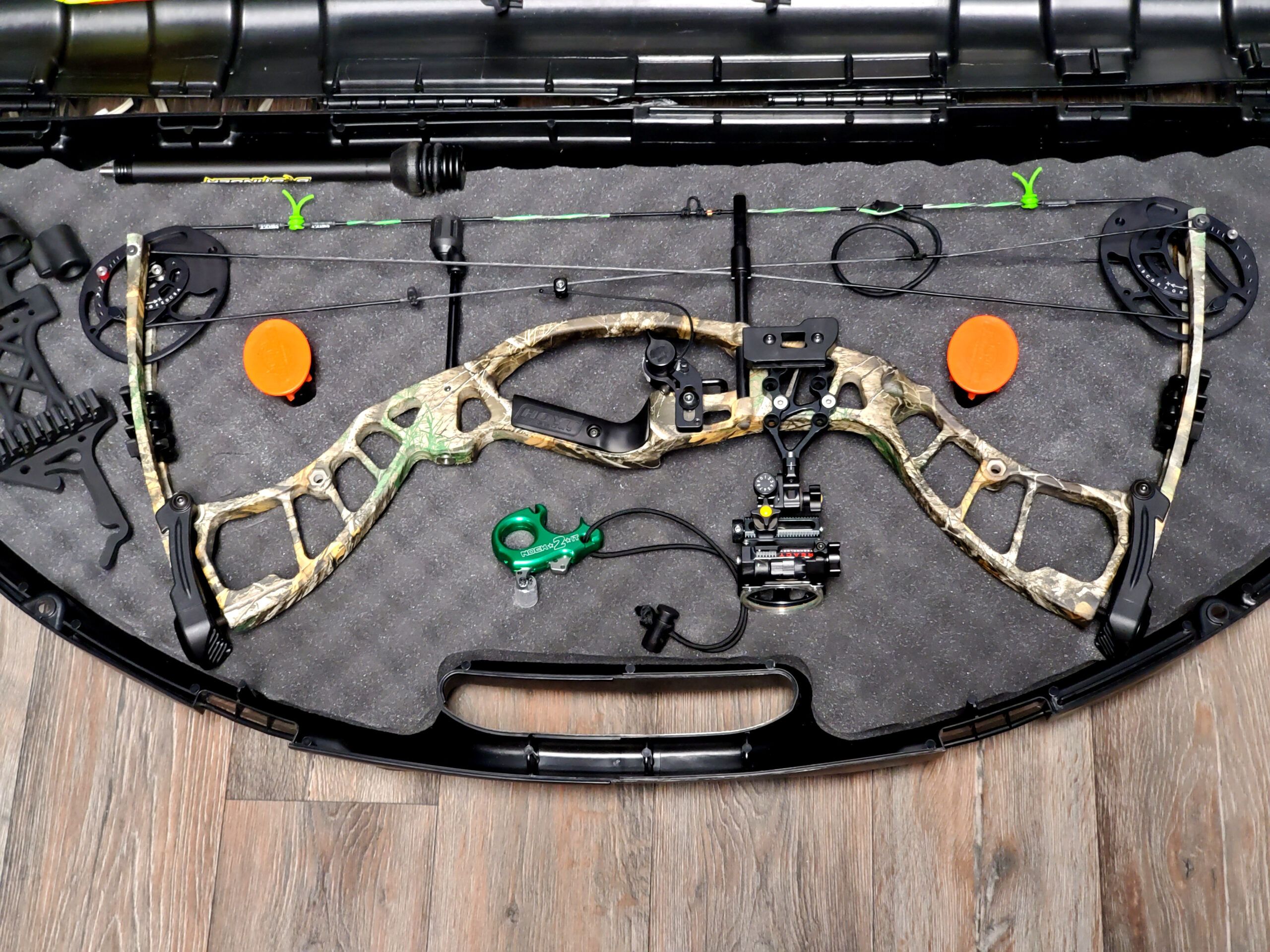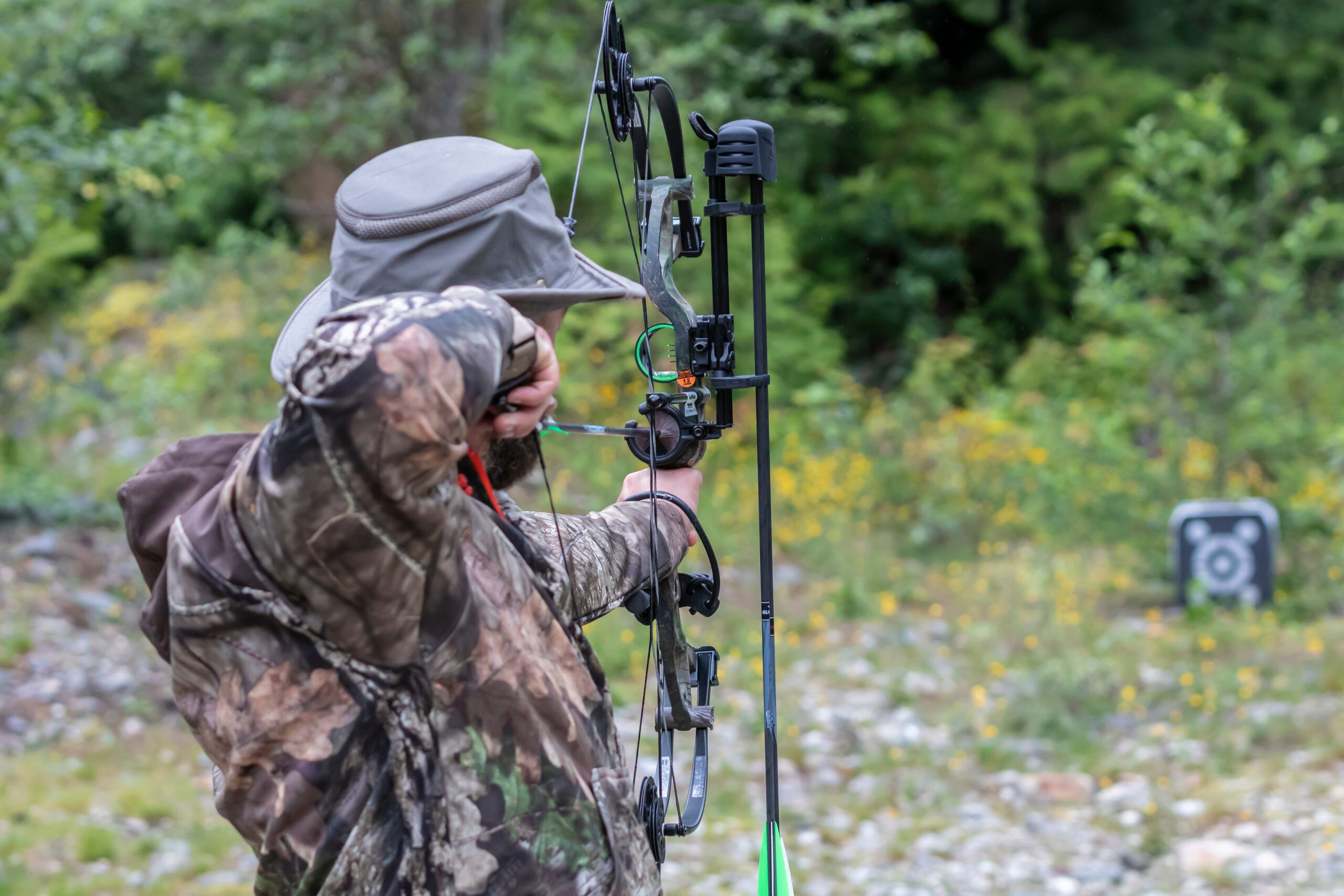A lot of our readers are pretty lucky folks: they live on a lot of land, and whenever they want to shoot a few arrows, they grab their bow from the shed, trod across open fields that have been in their family for generations, and fire off a couple of shots at a 3-D target of a deer that’s 80 yards away. No plans required—just grab the bow and go.
For the rest of us… there’s a bit of planning involved! If you’re traveling with your archery gear, either locally or across borders, there are some strict rules and regulations you’ll need to know before you travel, and not following those rules could get you in quite a bit of trouble.
So, in this post, we’ll jump into the details, and discuss each scenario—and each type of travel—and go over some of the things you need to keep in mind when you’re traveling with archery equipment.
First Things First: Your Bow Case
(By the way: If you’re familiar with bow cases, you can skip to the next section. This is for our brothers and sisters who are new to archery and just learning about gear.)
If you’re moving a bow, a set of arrows, and assorted pieces of gear from Point A to Point B, 99% of the time you’ll be doing so using a bow case. Bow cases usually come in two types:
1. Hard cases, that have a solid outer shell, with inner sections usually fitted with foam or padding to hold bows and arrows and various pieces of equipment; and
2. Soft cases, that are made of durable cloth material, and fitted with inner sections and pockets for holding gear.
Each type of case has its pros and cons. Hard cases are usually more expensive, provide a lot more protection, and they’re usually required for air travel and train/bus travel; soft cases are usually cheaper, a little more roomy, and good for lugging your bow and gear around town in your car or pickup.
You can find hard cases for recurves and compounds, and you can find soft cases for recurves and hard cases. Here’s a hard case for a recurve bow:

…and here’s a soft case that holds a compound bow:

Soft cases are pretty simple: you want to look for something that your bow can fit in, a long pocket for you to store your arrows, plenty of pockets for bow releases, tuning tools, arm guards, and so on, and a shoulder strap. Pretty simple.
Hard cases are a little more complicated, and they have a number of different features—including features that are important when it comes to travel. When you’re selecting one, you may want to consider:
Shell Material. The walls of cases can range from thin plastic, to ultra-thick materials that provide some serious protection. The shells can also feature various properties, and higher-end shells can be water-resistant, and/or heat- and cold-resistant.
Wheels for Transport. You usually see these on hard cases and not soft cases—they’re not much use if you’re just going back and forth to the range, but they’re very helpful if you’re a hunter and flying all over the globe for new hunts.
TSA-Approved Locks. If you’re going to be traveling, save yourself a huge headache and consider getting a hard-case with locks that agents of the Transportation Security Administration (aka, the TSA—we’ll be talking more about them in a minute) can open using their master keys. The TSA may check your luggage when you’re in front of it, but they may also check it after you stow it, and if you’re not using a TSA-friendly lock, they’ll cut through it.
Makers of bow cases will often say in their marketing materials whether the case is TSA-compliant; if you’re going to be traveling by plane and bringing your bow with you, it’s something to look for. If you’re certain you’ll never be flying with a bow, a TSA-friendly lock doesn’t really matter too much.
Pinned Hinges and Spring-Loaded Latches. There are some unbelievably high-end bow cases out there, and that makes sense, if you think about it—there are some unbelievably high-end bows out there, and the folks who buy those bows want to be sure they’re protected. High-quality hinges and latches can be a sign of quality, and that the case is going to last a while.
Interior Tie-Downs. These keep things in place when you’re actually travelling, and they’re important, because when you’re travelling—especially if you’re experiencing turbulence or going over bumpy roads—your innards of your bow case is going to get jostled around. You’ll want to make sure your bow is tied down, but you also want to make sure there are tie-downs for your arrows and whatever other equipment you’ll want to bring along.
Comfortable Handles. Most newer bow cases have solid handles, but some of the bow cases we’ve bought in yester-year did not. Something to keep in mind. And, lastly…
Warranties. We here at Complete Guide to Archery take pride of ownership seriously, and we’d urge you to do the same—take care of your things, but always consider the warranty, especially if you’re the kind of guy or gal who owns things that tend to get roughed up.
How to Travel with Archery Equipment by Plane
First things first—and this should be obvious to anyone who… well, it should be obvious to everyone:
Bows and Arrows Are Not Allowed in Carry-On Luggage
The Transportation Security Administration is very clear about that. You will have to put any bows or arrows you bring in a bow case, and that bow case must be checked—meaning, you must turn over that luggage to airline officials before you board the plane so that they can put that luggage in the hold of the aircraft. Checked luggage is unavailable to people on a flight, and that’s the whole point: they don’t want passengers being to get to luggage that could prove to be dangerous to others.
Your Equipment Must Be Packaged Safely
So your luggage that contains your bows and arrows must be checked. After that luggage is checked, your luggage may be X-rayed, and it may also be opened and searched. So, any sharp edges on your equipment—such as a broadhead on an arrow—should be sheathed and/or wrapped securely, so that when a TSA agent (such as a security screen or a baggage handler) removes the equipment from your luggage, they will be safe from harm. The same goes for any sharp-edged equipment, so if you’ve got a hunting trip planned and you’ll be taking along a knife or any other sharp hunting tools, those need to be sheathed, as well.
If You’re Traveling Internationally…
It can make a lot of sense to register your bow or bows with U.S. Customs and Border Protection.
If you’re going to another country—say you’re traveling abroad for a target archery/field archery competition, or you’re finally taking that exotic hunting trip you’ve always dreamed of—you can go to a Customs office before the date you leave the country, and fill out Form 4457, Certificate of Registration for Personal Effects Taken Abroad (for a detailed explanation of the form, you can read this post from the U.S. Customs and Border Protection website). The completed form will be proof that you didn’t buy the bow while you were abroad, and you won’t end up getting charged a duty at the time you return to the United States.
Two Notes About Bow Cases
As we mentioned earlier, the TSA has a list of TSA-approved bow cases, and the marketing material on the bow case will say whether the case is TSA-approved or not. There are two other factors to keep in mind regarding bow cases:
1) While there are hard-cases AND soft-cases available for airline travel, we’d recommend selecting a hard case: the sturdiness of the shell will protect your bow from the pressure from any other luggage packed above it, and because bows are finely-tuned instruments that can break or crack under too much pressure, you’ll probably want all the protection you can get.
And, not only will your bow need that protection when it’s in the plane’s hold, it’ll need protection when TSA agents/airline employees transport it to the plane itself—very often, luggage is tossed, thrown, and/or dropped, and bows—even expensive ones—can break or be damaged en route. There’s nothing worse than arriving at your destination, picking up your bow, and then opening it later to find out it’s been dinged up or destroyed; and
2) You need to call ahead and make sure your airline doesn’t have a size restriction on your bow case. Very often, bow cases are within the accepted size range for luggage, but you want to call ahead and make sure.
Before we move on to our section about traveling in trains, we’ll repeat that list bit, and probably say it a couple of times again later: always call ahead and be prepared. If you’ve got a flight planned, call the airline ahead of time and make sure everything is good to go: that you’ll be allowed to travel with your bow and arrows in a bow case, that the bow case you have is TSA- and airline-approved and not too big, and that you’ll be able to check it when you arrive to the airport. Ask them if there’s anything special you need to know, plan accordingly, and then show up a little bit early for your flight, just in case you need to answer any questions.
Upon Arrival…
When you arrive at your destination, you should be able to pick up your bow and bow case at the baggage claim, or at a location that your airline/airport designates. Enjoy your trip, and thank you for flying Complete Guide to Archery Airlines!
How to Travel with Archery Equipment by Train and Bus
Just as you would if you were traveling by plane, you’ll need to check your archery gear—no ifs, ands, or buts. You cannot take archery gear onto to the train or bus with you, and depending on the train or bus company you’re using, there are usually rules regarding how you’ll need to check your archery luggage.
For trains, Amtrak is a great example of how this plays out: not only do you need to check your luggage, your bow case needs to be a hard case, but the case itself cannot weight more than 50 pounds or be more than 75 linear inches long.
For buses, Greyhound is a great example of how this plays out: no to carry-on, yes to checking.
How to Travel with Archery Equipment by Subway and/or Crosstown Bus
Unfortunately, a definitive answer on whether you can take archery equipment on your city’s subway or bus system is beyond the scope of this post. There are local and state laws that are different for each city, and you’ll need to do a little research to discover your local ordinances.
There’s one thing we know for sure, though: if you’re carrying a bow and/or arrows on any metro and that bow or those arrows are exposed, you’re going to stopped your local authorities, and probably charged with something. So don’t do that. Look up your city’s laws and see what’s allowed, and if there are any laws the discuss transportation of archery equipment.
Some Travel Tips for You Adventurous Archers
Here are some things you should keep in mind when traveling with a bow:
Seriously, Call Ahead. We promised we’d mention this again, and here we are. If you’re planning travel, you do NOT want to be sidelined on your departure day because you didn’t know you had to have X-type of bow case or that you bow case was to big, or whatever the case may be. Call ahead and gather all the specific information you need to travel with your archery equipment.
Leave Extra Time at the Airport. A bow is a weapon, and it’s proper that the travel administrators treat it as such. They may want to review the contents of your luggage at multiple spots, so be prepare and pad your trip with some extra time. And, this is a good rule of life:
Be Courteous. TSA agents, bus drivers, and whoever else is asking about the contents of your luggage are just doing their job, and trying to keep everyone safe. They are an incredibly important part of safe travel, and they deserve our respect at all times. Be courteous and let them do their job.
Don’t Panic… if you land at your destination, go to your airline’s luggage carousel, and don’t see your bow case. For safety reasons, it may have been segregated from other luggage, so don’t be surprised if it’s brought to you by a gate agent or a member of the ground crew.
Take Notes for Next Time. After a couple of trips with your archery gear, it’ll all seem second nature, and you’ll be able to plan your trip without as much effort. Do it a few times, and you’ll get the hang of it. So…
Have fun, be good, and enjoy your trip!




